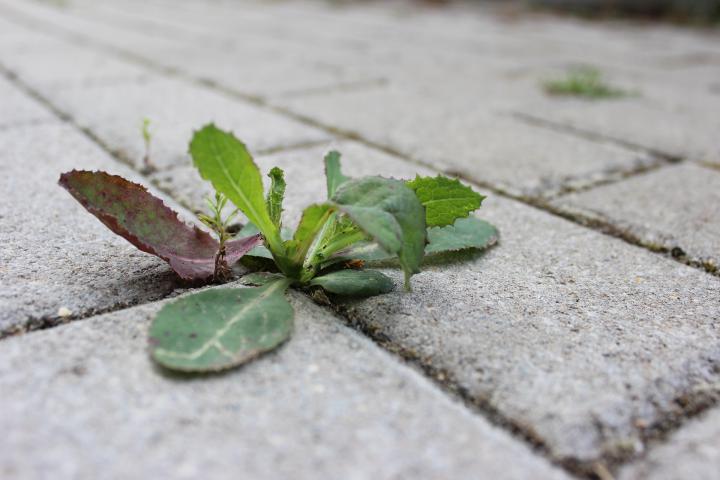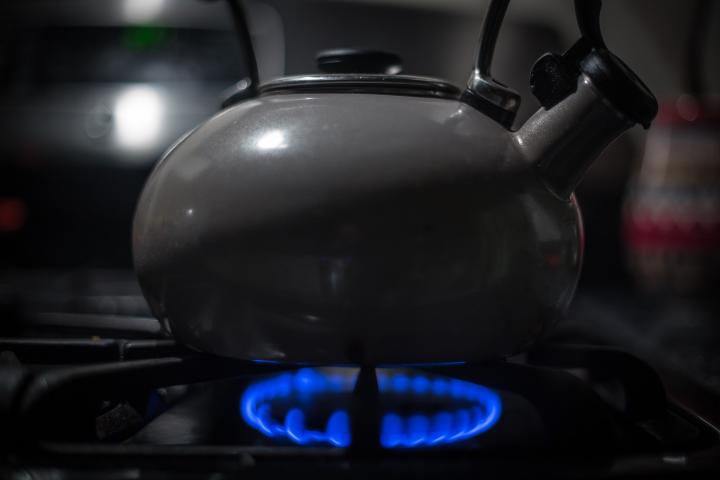After watching my neighbor spray the weeds in his driveway with a cancer-causing herbicide, I thought I should look into some natural "weed killers" to rid your yard of unwanted plants. Here are a few homegrown ways to get rid of competing plants while still keeping people, pets, wildlife, and waterways safe.
Get to the Root of the Problem
Without a doubt, the best way to get rid of weeds like tap-rooted dock, thorny raspberry plants, oak and maple seedlings, invasive swallow-wort and bittersweet, and even poison ivy is to pull them out by the roots. If you can get most or all of their roots, this greatly reduces their chances of growing back.

Other weeds, like those that grow in the cracks of pavement or out of my neighbor's crushed stone driveway, are harder to get at, making it impossible to get all of the roots out without disturbing the paving material. In these cases, natural herbicides may be necessary.
⇒ What is a "weed" exactly? See a list of common garden weeds.

5 Homemade Natural Herbicides
Here are a few natural "weed killers" to help you get rid of those unwanted plants while keeping people and pets safe and protecting lakes and streams from contamination with hazardous chemicals.
- Boiling water. Yes, it's that simple. Get the teakettle boiling and pour hot water over those pesky weeds that grow in sidewalk cracks. It may take more than one application, but they will eventually die off.
- Fire. Use a small hand held torch or invest in a flame weeder. (Yes, they actually make a tool for weeding with fire.)
Though effective, this idea scares me a bit and comes with a BIG warning: Do not use fire if you live in an area susceptible to forest fires. I have visions of someone setting the whole neighborhood ablaze, so don't use it if you live in a fire-prone area or during dry conditions. Check with your local fire department first to see if this is something they recommend. Even if they deem it safe and give you the go ahead, always have a bucket of water or hose at the ready just in case. Take care when using fire around dead grass or dry leaves. Many vegetable farmers use flame weeders to get rid of annual weeds before planting crops. They are good for eliminating weeds along fence-lines where mowing is impossible or in the rows between planting beds. You don't have to burn the plants, just a brief exposure to high heat is enough to kill off most annual weeds. Perennial weeds have deeper roots and may regrow, needing another shot of fire later in the season.
- Salt. Dissolve 1 cup salt in 8 cups of hot water, let cool, add a little dish soap, and pour into a spray bottle. Spray the leaves of the unwanted weeds, protecting any nearby plants from overspray. Take care not to soak the soil. Nothing will grow where the soil has been contaminated with salt.
- Vinegar. Spray full-strength white vinegar mixed with a little liquid soap onto the leaves of the offending plants. As with salt, be careful not to soak the soil. Don't spray on a windy day to lessen the risk of getting any overspray on neighboring plants. For a double whammy, you can add 1 cup of salt to a gallon of vinegar, mix in a squirt of dish soap to help it stick to the plants, and pickle them to death!
- Borax. This is sold alongside cleaning products in the supermarket and is used as a laundry booster. It is extremely alkaline—around 9.5 on the pH scale. Dissolve 1/2 cup of borax in 1 gallon of water and spray directly on the leaves of the unwanted plants. It can also be sprinkled dry onto weeds growing out of sidewalk cracks. Borax has many other uses—from removing rust to drying flowers—but it is toxic if ingested, so keep it away from kids and pets.
To protect your skin, be sure to wear gloves when using any of these sprays, especially borax.
See this video demonstrating how to keep weeds under control (without weed killers)!.













